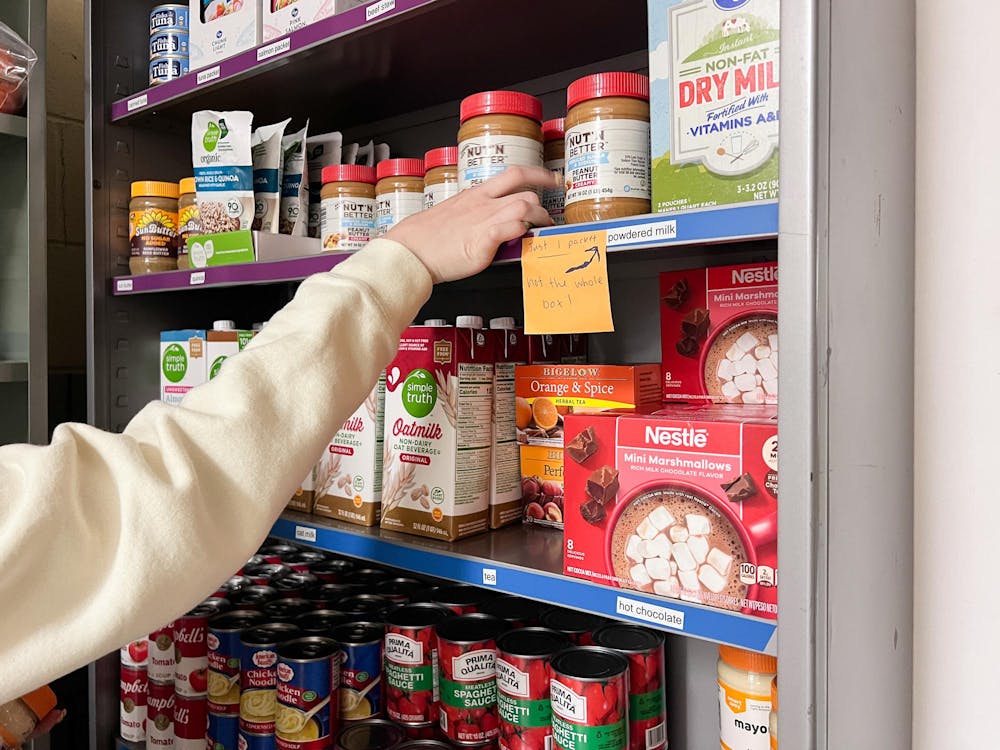With Wednesday, Nov. 5, marking the longest government shutdown in United States history, the effects of the government’s inactivity are being felt nationwide. Supplemental Nutrition Assistance Program, or SNAP, benefits are grinding to a halt, and 12.3% of the country has felt the repercussions of these cuts, according to SNAP data tables.
In Ohio, the number of SNAP recipients is nearly identical to the national average. 11.7% of Ohio residents utilized SNAP benefits during fiscal year 2024, which equates to $264 million from the federal government to Ohioans each month.
“I think this is going to have a profound effect in Oxford, the same way it’s going to have a profound effect everywhere,” said associate professor of political science Anne Williamson.
To soften the blow, a Rhode Island federal judge ordered the U.S. Department of Agriculture (USDA) to fund the food assistance program before the Nov. 1 expiration date, to which Trump said he would be “honored” to do on Oct. 31. Following the court order, the Trump administration committed to partially funding SNAP with a $4.65 billion payment, according to a top USDA official. However, the use of these funds would be slow, and SNAP recipients would likely not see relief for “a few weeks up to several months,” according to the official.
However, in the afternoon on Nov. 4, Trump suggested in a Truth Social post that he would refuse to aid SNAP so long as the government remains shut down.

Non-perishable foods line the walls of the Phillip Hall food pantry.
For farmers around southwest Ohio, including Lucy Owsley-Goodman, the loss of SNAP benefits is felt by her business. Lucy and her husband, Eugene, are the owners of their farm, located two miles north of Eaton, Ohio, and have been in the industry for 31 years.
Enjoy what you're reading?
Signup for our newsletter
Owsley-Goodman sells to the Richmond Farmer’s Market, which offers a unique deal with SNAP recipients where they do unlimited doubling.
“People who use SNAP can go to a farmers market and get fresh food, and if there's a doubling program, they can get the food essentially for half price, but the farmer gets the full price,” Owsley-Goodman said.
Market-goers can use their Electronic Benefit Transfer (EBT) card loaded with their SNAP benefits, and local farmers who sell at the market benefit fully from the profit. For Owsley-Goodman, more than a quarter of her sales are through SNAP at the Richmond Farmers Market.
“Our sales are [about to] go down,” Owsley-Goodman said. “That’s not a good proposition … not at all.”
SNAP is part of a farm subsidy program, where it is used as a way to get rid of an excess of certain farm products. For Owsley-Goodman, this means profiting from her produce, including tomatoes, lettuce and red chard outside of her sales to the farmers market.
“If you have more people who can afford food, then you have more people who will be buying what the farmers grow,” Williamson said. “Look at all the farmland around us. I mean, I knew that this was farm country, but I can still remember when I first drove into Oxford and saw all the fields of corn.”
The Talawanda Oxford Pantry and Social Services (TOPSS) serves 400-500 Oxford families weekly; however, in the last two weeks alone, that number has surged to 600, according to executive director Sherry Martin. The number of Oxford residents requiring food assistance cannot be served by the pantry alone, which is why Martin said the elimination of SNAP benefits in Oxford would cause the pantry to be overwhelmed in the coming weeks.
“I've kind of been in denial, just thinking that something would change before [Nov. 1],” Martin said. “... We think that people are kind of bracing themselves for not getting their SNAP benefits.”
However, in the wake of the Nov. 1 freeze on benefits, Martin said the Oxford community has stepped up.
“Every day that we're open, we've gotten just loads and loads of food,” Martin said. “Of course, it goes right back out [the door] … It's really nice to see the whole community stepping up and people digging deep and donating and helping share information.”
Martin said she has been communicating the pantry’s needs to the public through the TOPSS social media and has received high levels of engagement since.
Ohio Governor Mike DeWine signed an executive order for the Ohio Department of Job and Family Services to direct the provision of temporary assistance to Ohioans facing food insecurity. Should the government shutdown continue, this order provides up to $25 million in food assistance to aid Ohio families affected by the SNAP suspension.
“[The Ohio government] has been doing an amazing job of communicating and trying to support us,” Martin said. “But the food is just not there. Pantries were not meant to replace SNAP; it was supposed to supplement or to help people who don't qualify for SNAP. To replace SNAP is impossible.”




